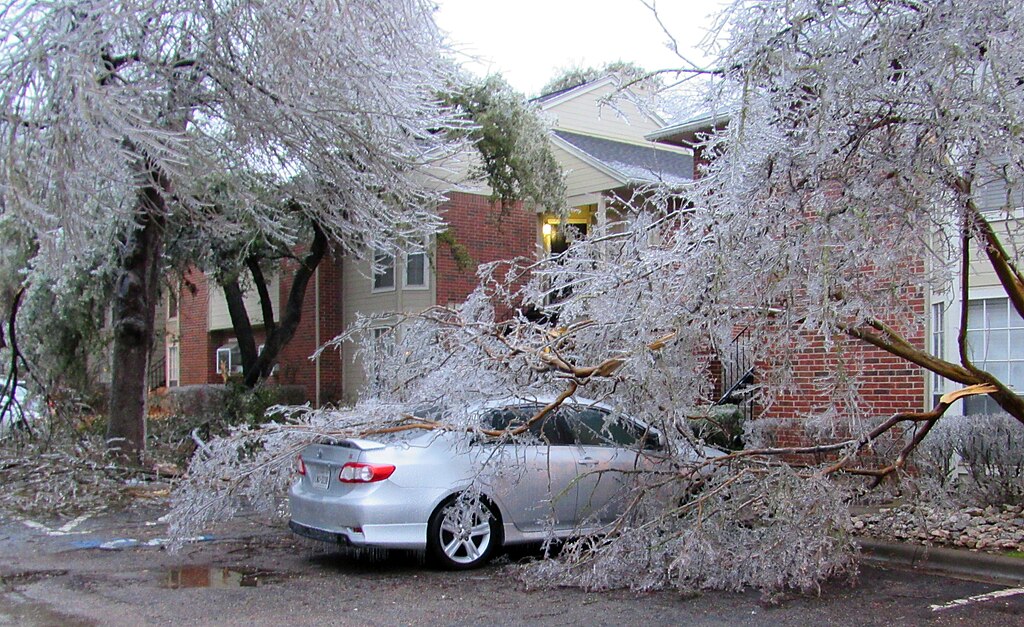Ice storms can cause various types of damage to houses. Some common damages include:
1. Ice Accumulation on Roofs: Accumulation of ice on roofs can lead to structural damage and leaks. The weight of the ice can stress the roof structure, causing it to sag or even collapse.
2. Ice Dams: Ice dams can form at the edge of the roof, preventing proper drainage of melted snow. This can lead to water seeping into the attic or walls, causing water damage.
3. Frozen Pipes: Extremely cold temperatures during ice storms can cause pipes to freeze and burst. This can result in water damage and flooding inside the house.
4. Tree Damage: Ice accumulation on tree branches can make them heavy and prone to breaking. Falling branches or trees can damage roofs, windows, and other parts of a house.
5. Power Outages: Ice storms can lead to power outages, and without heating, homes can become susceptible to freezing temperatures. This can cause damage to plumbing and other vulnerable components.
6. Slippery Surfaces: Ice storms create icy surfaces around the house, increasing the risk of slips and falls. This can lead to personal injuries and property damage.
7. Car Accidents: Icy roads during ice storms can contribute to car accidents, and if a vehicle collides with a house, it can cause damage.
8. Gutter Damage: Ice accumulation in gutters can cause them to sag or break away from the house. This can lead to water not properly draining away from the home.
9. Power Lines and Utility Damage: Ice storms can cause power lines and other utility lines to break or sag. This can result in further property damage and prolonged power outages.
It’s important for homeowners to take preventive measures, such as proper insulation, keeping pipes warm, and trimming trees before winter storms to reduce the risk of damage during ice storms. Additionally, prompt action after an ice storm, such as removing ice dams and fallen branches, can help mitigate potential damage.

Ice Day, Austin, Tx, Feb 2, 2023
